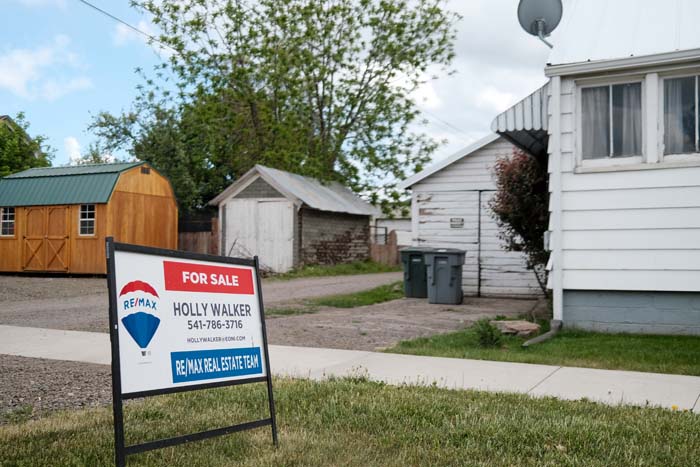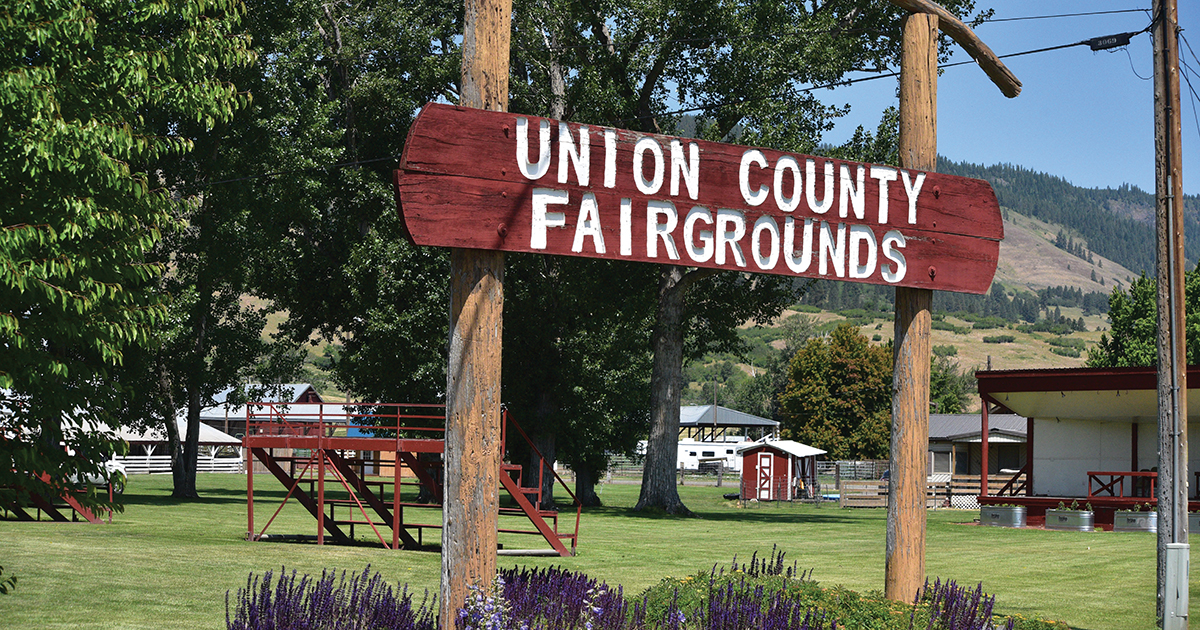City of La Grande weighs solutions to housing shortage
Published 6:00 am Tuesday, May 25, 2021

- A for-sale sign sits outside a small home on Jefferson Avenue in La Grande on Monday, May 17, 2021. The city has seen the housing market dry up with prospective homeowners competing for a thin market and new renters finding difficulty in establishing housing.
LA GRANDE — The city of La Grande and its planning commission continue to deal with the shortage of affordable housing in the city.
Trending
The La Grande City Council/Planning Commission Joint Work Session on April 12, 2021, looked at various solutions to the looming crisis.
According to the Housing Needs Analysis in 2019, La Grande is in need of 800 new units within the next 20 years to compensate for a projected growth of 1,392 new residents. That’s about 40 new units every year to meet the prediction.
The HNA found single-family homes will be the most vital form of housing in coming years, despite accounting for a smaller percentage of new housing units than the current housing stock.
Trending
“We predominantly have contractors that build custom homes, one or two at a time,” Community Development Director Mike Boquist said. “We don’t generally have a large inventory of houses that are available for sale that are constantly under construction like they do in larger cities.”
As it stands, about 25% of households in La Grande are under severe rent burden, meaning residents spend more than 50% of their income on housing. This also qualifies as a housing crisis. Further, affordable apartments and houses for rent are hard to come by in La Grande. According to the La Grande Housing Production Strategy Open House and Survey on Feb. 26, renters in La Grande are twice as likely to be cost burdened than homeowners, which is a telling sign.
“We have a lot of land in our inventory here that’s available for construction, but just not a lot of vacant homes,” Boquist said.
Boquist noted the lack of upper-middle and upper-end housing creates problems in La Grande. The expansion of Grande Ronde Hospital or Eastern Oregon University, for example, can create more jobs and a need for housing in the upper-income category. If these homebuyers or renters end up living in housing they wouldn’t otherwise have chosen, the next level down in the middle income range has to do the same. This leads to lower-income housing being less available for those who need it based on their salary.
This is a problem that has little possible solutions other than building more homes.
The April joint work session looked over a memo from Cascadia Partners, a consulting firm based in Portland. The goal of its plan was to present strategies for La Grande’s Housing Production Strategy, which Boquist said he hopes will go before the city during the summer.
One of the most prevalent proposals is lowering the minimum lot size for single-family detached homes, townhouses, triplexes/quadplexes and multi-family developments. This would allow the city to reduce the land cost per unit and still be compatible with existing lot sizes and density patterns, according to one strategy at the work session.
The work session also proposed reducing barriers to cottage housing developments and accessory dwelling units to open up more space for housing. ADUs are units that can be located on an owner’s property and rented. One action proposed the city should allow ADUs to exist on a site with a duplex as well.
The Housing Production Strategy recommended amending unnecessary codes to limit barriers on construction in existing buildings. This would allow existing buildings in downtown La Grande to be developed into housing units and save money while doing so.
Several other elements of property development were addressed in the work session, including the city basing water and sewer connection fees on the size of lots and not size of homes. The HPS encouraged scale development fees that are proportional to the unit size.
Boquist pointed out a single-family house versus a duplex or triplex on the same plot of land will pay the same fees on the same connection to get water.
“That’s something we have to look at to see how easy it would be to change,” he said. “How do you then implement that across the board so it’s fair?”
The remaining sections of the strategy report focused on implementing new partnerships and supporting local partners in acquiring land to improve the housing setup. The sections point out that organizing public resources can improve the development of housing units and reduce funding through the modification of previously funded infrastructure.
“We could figure out how to do a public-private partnership or if public works can use some of their resources to help with some of the water-sewer-street infrastructure in order to reduce costs for development,” Boquist said.
Another major influence in the shortage of housing is Eastern Oregon University students who want to live off campus. In EOU’s guide to off-campus housing and information document on its website, the school states that finding off-campus housing is a challenge. The market for affordable housing in La Grande is usually tight and competitive.
With that added presence of prospective renters, the market becomes less flexible in La Grande.
“We house a majority of our freshman students, then after that they tend to want to move off campus,” said EOU Director of Residence Life Jeremy David Jones. “We currently have 120 beds that are slated for upperclassmen.”
EOU houses approximately 400 students, which means only about 25% of that group is upperclass students. The remaining upperclass students find housing options off campus, which dips into the overall tightness of availability.
Finding a place to live in La Grande also can be difficult for prospective renters who have lower incomes but do not meet the income requirements of subsidized housing. That leaves them with a scramble to find a living situation to accommodate their price range.
Basic apartment search websites typically only have one or two available listings, then a large number listed with no availability. Timing can be an issue in La Grande, depending on the urgency of the move-in date with new renters or buyers.
“For homes for sale, there is a shortage of properties because there are more buyers than sellers,” said Valley Realty principal broker Anita Fager. “Prices are rising because of that supply shortage.”
Many times, listings for rent may be three-bedroom units or larger, making it difficult for solo renters. In those bigger units, either families or groups of students will usually look to rent.
“Students are known for partnering up, and they’ll put three or four students in an apartment to share that rent, while the average person in town isn’t going to do that,” Boquist said.
Even though demand and availability for units is an issue, La Grande’s cost of living is well below the national average and the average in the state of Oregon. With the national average being 100, BestPlaces rates La Grande’s cost of housing at 76.9 compared to 148.9 for the state of Oregon.
The correlation between low housing costs and lack of availability seems to point to the opportunity for many new residents if more units were available.
Construction on La Grande’s newest apartment complex, Timber Ridge Apartments, is set to begin in July. The $23.7 million project will open up 104 units for low-income renters on East Q Avenue between 26th and 27th streets.
“I suspect that’s going to have a pretty significant impact on our housing experience,” Jones said.
Phase 2 of the 2019 Housing Needs Analysis entails a fully prepared housing production strategy, which Boquist anticipates the La Grande City Council will see by July. This will consist of a detailed list of strategies and approaches to improve La Grande’s housing shortage moving forward.









